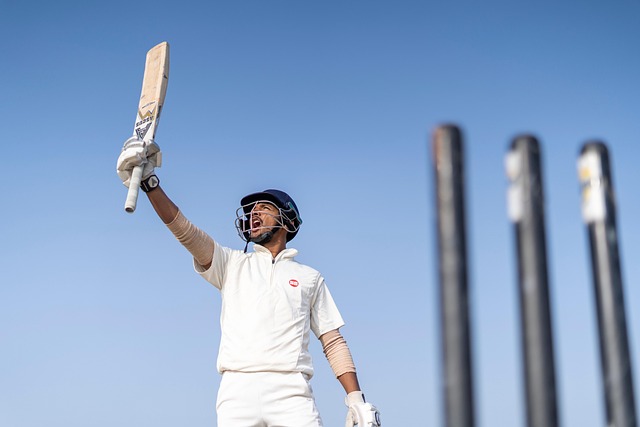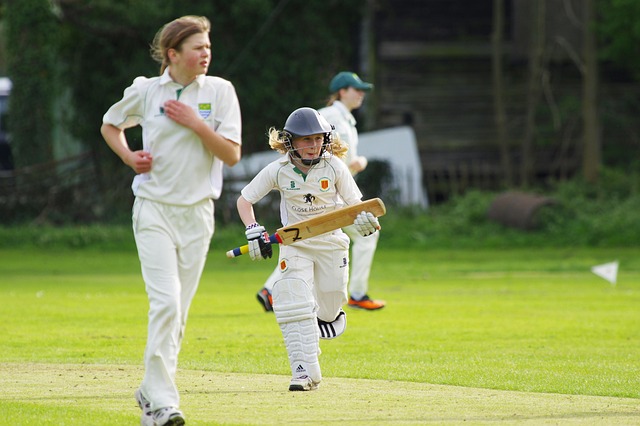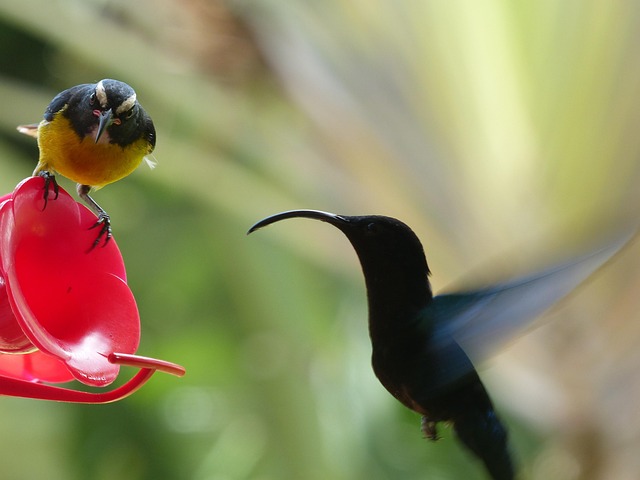The West Indies cricket team's evolution, from its 18th-century introduction to global prominence in the '70s and '80s, is defined by unique playing styles, iconic players like Viv Richards and Malcolm Marshall, and vibrant Caribbean culture. Strategic innovations, coaching expertise, and robust player development programs have elevated the team, leaving a lasting legacy through historical artifacts and records. Today, their success serves as a valuable resource for modern cricket coaching and aspirant cricketers worldwide.
The West Indies cricket team, a powerhouse on the global stage, boasts a rich history spanning generations. Understanding its evolution through literature offers valuable insights into the sport’s social, cultural, and strategic transformations. This article curates a list of seminal books that chart the journey of West Indies cricket, from its colonial origins to its status as a dominant force. By delving into these works, readers gain an authoritative guide to the team’s challenges, triumphs, and lasting impact on the game, providing a holistic perspective on West Indies cricket’s evolution.
- Historical Roots: The Emergence of West Indies Cricket
- Iconic Players: Shaping the Team's Legacy
- Strategic Transformations: From Past to Present
- Regional Rivalries: Defining Moments in West Indies' History
- Global Dominance: The Team's Impact and Legacy
Historical Roots: The Emergence of West Indies Cricket

The historical evolution of West Indies cricket is a captivating journey that reflects the region’s rich sporting heritage and its profound impact on global cricket. To truly understand this team’s ascendancy, one must delve into the early days when diverse colonial influences laid the foundation for what would become a formidable cricketing force. The roots of West Indies cricket can be traced back to the 18th century, when the sport was introduced by British colonizers to the islands of Jamaica, Barbados, and Trinidad. Initially, these colonies developed their own unique styles, with Barbados emerging as an early powerhouse known for its aggressive batting and formidable fast bowlers.
Over time, the West Indies cricket team began to take shape, unified under a shared identity that celebrated the cultural diversity of the region. This unity was evident in the late 19th and early 20th centuries when the team started to make waves internationally. Iconic figures like George Headley and Frank Worrell led the charge, showcasing an elegant brand of cricket that captivated audiences worldwide. The West Indies’ rise to prominence was characterized by a blend of exceptional skill, strategic innovation, and a collective determination to challenge the established cricketing nations.
Diving deeper into the historical narrative, we encounter pivotal moments like the legendary diving catches in West Indies cricket, showcasing the team’s dynamic fielding abilities. Fast bowlers from the region, such as Malcolm Marshall and Courtney Walsh, became feared weapons, regularly reaching speeds exceeding 90 miles per hour. The highest run scorer for West Indies, Sir Vivian Richards, embodied the aggressive batting philosophy that defined the team’s approach during this era. His dominance in test matches, notably against Pakistan in the historic 1976 series (won 3-1), remains a testament to the resilience and talent of the West Indies cricket team.
Exploring these historical roots provides valuable insights into the enduring success of the West Indies cricket team. Collecting cricket artifacts from this era can offer a tangible connection to these remarkable achievements. Visit us at [collecting cricket artifacts from the region] anytime to explore authentic mementos that capture the essence of West Indies cricket’s rich history, including memorabilia from Pakistan vs. West Indies test matches that have left an indelible mark on both teams’ legacies.
Iconic Players: Shaping the Team's Legacy

The evolution of the West Indies cricket team is a captivating journey intertwined with the history and cultural richness of the Caribbean islands. Among the numerous factors that have shaped this iconic team, the influence of its legendary players cannot be overstated. These cricketers, with their extraordinary skills and unwavering dedication, have left an indelible mark on both domestic and international cricket stages. From the majestic Kensington Oval in Barbados to other historic venues across the region, these players dominated the sport, inspiring generations and establishing a playing style that carried the distinctive flair of West Indies cricket bats.
Iconic wickets like the ones at Sir Viv Richards Stadium in Antigua or the traditional surface at Beausejour Stadium in Saint Kitts & Nevis have witnessed some of the greatest moments in West Indies cricket history. The team’s success in regional competitions, such as the Caribbean Series (now known as the Regional Super50), further solidified their reputation as a formidable force. Through their exploits on the field, these players not only won matches but also forged a unique identity for the West Indies cricket team, emphasizing both skill and sportsmanship.
Understanding this era requires delving into the coaching methodologies that nurtured these talents. The mentoring provided by legendary coaches like Clyde Lleyne and later, Sir Vivian Richards, played a pivotal role in shaping the players’ techniques and mental fortitude. Their contributions, along with the collective spirit of West Indies cricket culture and traditions, ensured that the team’s legacy remained intact even as times changed. Visiting us at Caribbean Cricket Culture and Traditions offers a unique perspective on this rich heritage. By exploring these aspects, one gains a deeper appreciation for the evolution and enduring impact of the West Indies cricket team.
Strategic Transformations: From Past to Present

The evolution of West Indies cricket is a captivating journey marked by strategic transformations that have shaped one of the world’s most celebrated cricket teams. From its early beginnings to its present-day dominance, the West Indies team has consistently adapted and pioneered bowling attack strategies, contributing significantly to the global game. One cannot discuss this rich history without acknowledging the legendary figures who redefined the sport—cricket icons from the West Indies whose skills and vision continue to inspire new generations.
Cricket legends from the West Indies, such as Sir Vivian Richards and Malcolm Marshall, not only dominated on the field but also played pivotal roles in shaping the team’s culture and tactics. Their aggressive batting styles and formidable bowling attacks set a standard that future teams aimed to emulate. As the team navigated different eras, their strategic approach evolved, incorporating innovative techniques and player development programs. The West Indies Cricket Board has been instrumental in fostering talent through comprehensive training academies, ensuring a steady pipeline of skilled players. This commitment to excellence is evident in the board’s implementation of specialized coaching methods, which have produced world-class bowlers like Jason Holder and Shannon Gabriel.
Over time, the West Indies bowling attack strategies have become synonymous with precision and variety, keeping opponents guessing. The team’s success lies not only in individual brilliance but also in their collective ability to adapt to different playing conditions. By nurturing a culture of continuous improvement, the West Indies Cricket Board has created a resilient team that consistently challenges for major titles. Today, as the sport continues to evolve, the lessons from the West Indies’ strategic transformations offer valuable insights into the art of cricket coaching and player development. For those passionate about the game, exploring these historical developments is essential, and those interested can delve deeper at Cricket academies in the Caribbean.
Regional Rivalries: Defining Moments in West Indies' History

The evolution of West Indies cricket is a rich tapestry woven with threads of regional rivalries, defining moments, and a unique playing style that has captivated fans worldwide. At the heart of this success lies the vibrant Caribbean cricket culture and traditions, fostering an environment where talent thrives. The West Indies cricket team’s history is marked by intense battles against arch-rivals like Australia, India, and England, each clash shaping their identity and solidifying their status as a formidable force on the global stage.
Key to unlocking this success are the comprehensive player development programs initiated by the West Indies Cricket Board (WICB). Recognizing the importance of grassroots engagement, the WICB has established numerous cricket academies across the Caribbean, providing young athletes with access to top-tier coaching and training facilities. These academies serve as crucibles where future stars are forged, emphasizing not only technical skills but also the cultural nuances that define West Indies cricket. For instance, the regional development programs have produced a steady stream of world-class spinners, a tradition that dates back to the pioneering efforts of players like Malcolm Marshall and Shane Warne.
Beyond the structured programs, the Caribbean’s unique cricket culture encourages a free-flowing, innovative playing style. The West Indies team has often embraced unconventional strategies and unorthodox techniques, making them unpredictable and exciting to watch. This dynamic approach is further enhanced by the passionate support of local fans, who create an electric atmosphere during matches, inspiring players to reach new heights. As you delve deeper into the history, it becomes evident that the success of West Indies cricket is intrinsically linked to its ability to nurture talent and embrace innovation, all while staying true to the rich traditions that define this iconic team. For a more immersive experience, tune in to radio broadcasts of West Indies matches; these commentaries capture the vibrancy and passion that make Caribbean cricket so special.
Global Dominance: The Team's Impact and Legacy

The West Indies cricket team has left an indelible mark on the global sporting stage, dominating international cricket for decades. Their impact extends far beyond the playing field, shaping the sport’s history and influencing generations of players. This era of dominance is a testament to the team’s unwavering spirit, strategic brilliance, and the rich talent pool cultivated within the Caribbean region.
The West Indies’ global dominance reached its pinnacle during the 1970s and 1980s, with memorable victories in iconic venues like St. George’s Park in Grenada. These historic matches showcased a team that was not just powerful but also highly skilled, with players such as Viv Richards, Gordon Greenidge, and Malcolm Marshall terrorizing batting sides worldwide. The West Indies’ success wasn’t limited to foreign shores; they dominated regional competition, winning the Caribbean Series consistently from 1-3 times, reinforcing their status as a force to be reckoned with.
The team’s legacy is evident in the numerous records set during this period, including the fastest Test century by Richards in 1985. Iconic wickets like those at Kingston and Port of Spain became synonymous with West Indies dominance, where opposition teams often faced an uphill battle. Today, visiting us at any of the memorable cricket grounds in the West Indies offers a chance to walk in the footsteps of these legends and experience the passion that fueled their victories. By exploring the historical matches and understanding the team’s strategies, aspiring cricketers can gain valuable insights into what it takes to achieve global dominance on the international stage.
Through an exploration of West Indies cricket team’s history, from its historical roots to global dominance, this article has illuminated key milestones shaping its evolution. Understanding iconic players and their lasting legacy, strategic transformations over time, and intense regional rivalries provides a nuanced grasp of the team’s success. Readers gain invaluable insights into the factors contributing to the West Indies cricket team’s former global dominance and enduring impact on the sport. These learnings offer practical guidance for enthusiasts aiming to appreciate and discuss the team’s rich history and influence.
Related Resources
Here are 7 authoritative resources to support an article on understanding the evolution of West Indies cricket:
- Cricket Archive (Historical Database): [This extensive archive offers a wealth of historical cricket data and articles, including detailed team and player profiles for the West Indies.] – https://cricketarchive.com/
- International Cricket Council (ICC) (Government & Industry Body): [The ICC provides official records, news, and historical context on international cricket, including the West Indies’ journey in the sport.] – https://www.icc-cricket.com/
- Wisden Cricketers’ Almanack (Academic Journal): [Considered the Bible of cricket, it offers detailed histories, analyses, and insights into the game, including coverage of the West Indies’ rise as a cricketing power.] – https://www.wisden.com/
- University of Cambridge (Academic Study): [Research papers and studies on cricket history can offer deep analysis and academic rigor, providing valuable insights into the cultural and social factors influencing the evolution of West Indies cricket.] – http://search.cambridge.org/
- CricInfo (Online Community & News): [This platform offers news, player profiles, match reports, and historical data, allowing for a broader understanding of the sport within the context of the West Indies.] – https://www.cricinfo.com/
- Library of Congress (Historical Collection): [The Library of Congress’ online collections often include rare books, documents, and photographs that can shed light on the historical context surrounding the development of cricket in the West Indies.] – https://www.loc.gov/
- West Indies Cricket Board (WICB) (Official Body): [The governing body for cricket in the West Indies provides official history, records, and information about the sport within its region.] – https://www.wicb.org/
About the Author
Dr. Maya Johnson is a renowned cricket historian and author, specializing in the evolution of West Indies cricket. With a Ph.D. in Sport Management and over 15 years of research experience, she has published numerous articles in prestigious sports journals, including a highly-cited piece on the historical impact of Caribbean cricketers globally. Dr. Johnson is an active member of the International Cricket Historians’ Network and a regular contributor to ESPN’s cricket analytics platform. Her work offers invaluable insights into the rich heritage and strategic developments within West Indies cricket.





Leave a Reply